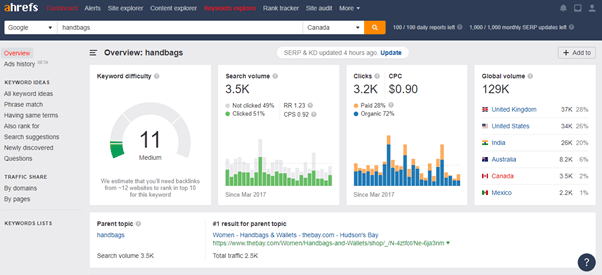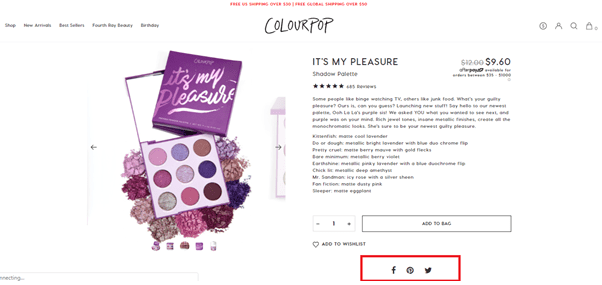Why do you need a strong online presence? Well, a big part of that is showing on search results online.
eCommerce SEO is important. It lets you be seen and heard in whatever niche you’re in. Over the last couple of years, it’s even become a determining factor as to whether or not your business will succeed.
Although the competition is fierce, there are tons of tips that you can take advantage of to stand out from the rest of the pack.
In this post, we’ll discuss a list of SEO best practices that you should know for your online store.
1. Make a Simple and Organized Website Structure
To provide the absolute best user experience (UX), make the structure of your site simple. That way, it will be easier for visitors and search engines to find vital information.
Moreover, search engine bots will better be able to index the pages on your website if you link internally between your product catalog and other content.
Once you have a website that’s properly structured, it’s easier for search engine crawlers to identify and crawl the range of pages on your domain.
2. Do Keyword Research
The key to selling online is knowing what customers are searching for.
For instance, if you own a huge online store, start your keyword research based on your product categories. That will make it easier to group your keywords while saving you time.
You can do your keyword research in any of a number of tools, such as Ahrefs keywords explorer.

If you’re struggling with your online presence, don’t go with short-tail keywords. Chances are, they will be extremely difficult to rank for, since they’re highly competitive. Instead, start with long-tail keywords.
Keep in mind that short-tail keywords may be high in search volume, but at the same time, they’re not specific.
On the other hand, long-tail keywords are low in search volume. But they’re less competitive and can help you attract high-quality visitors who are more likely to convert.
3. Start a Blog
When it comes to your business, you have to be consistent.
That’s why creating a blog which is related to your eCommerce site is an excellent way to build a loyal following over time. It will bring in more people who might want to check your site regularly.
For example, consider Shopify, Their website includes a blog that gives their audience business ideas about how to grow their sales.

A blog is an excellent platform for you to connect and build a relationship with your audience. Your readers might even check out your products section and purchase something.
4. Add a Search Bar
Does your ecommerce store have different catalogs of products? Then you should absolutely prioritize a search bar on your home page.
For example, if you have more than 20 products, a search bar is a must. That way, users don’t have to painstakingly scroll through your product pages. Otherwise, it will be a major turn-off when they’re ready to buy something from you.
5. Use High-Quality Images
A major disadvantage of eCommerce is that customers don’t get to experience the products like they would on a physical store. That’s why it is paramount that you have high-quality images for your online store.
When you’re taking photos, zoom in and feature various product angles as well. Then, highlight the notable features and benefits.
In Uniqlo’s product page, you can zoom in and out each item to clearly see every angle of the design.

If you really want to showcase one or more of your products, you should consider including a video. Why? 90 percent of consumers find videos helpful in helping them decide whether or not to buy a product.
6. Create Enticing Call-to-Action Buttons
Calls to action, or CTAs, are either buttons or lines of texts that prompt users on your site to take action.
There are three kinds of CTAs:
- Overviews: The ability for a user to add a specific product to their cart from the search result or product categories.
- On the Page: The Add to Cart button on product pages, when they are ready to make a purchase.
- Compelling: You need to be able to promote a variety of products from seasonal or limited promotions.
7. Make the Shopping Cart Visible
Your shopping cart should be highly visible on your website. Don’t make people look for it.
You can also place the number of products in your cart icon. That will help people remember that they have several items added to their cart.
8. Include Social Sharing Buttons
By placing social sharing buttons on your website, customers will have the option of easily sharing products they found or purchased from you to their friends and followers.
This Colourpop shop (see below) has social sharing buttons on each of its product pages.

Chances are, most online users have accounts on different social channels. Meanwhile, social sharing buttons serve as a free promotional tool for your store.
Social sharing buttons also make it convenient for users to post a specific product, without requiring the extra effort of copying, pasting, and posting on other websites.
9. Optimize Your Website for Mobile
Your eCommerce site needs to be optimized for mobile. 60% of online searches happen on mobile devices these days. Therefore, a lot of people are using their mobile devices to complete purchases.
So if you want to take your business to the next level, you simply cannot afford to exclude mobile shoppers.
You might even consider building an app for your eCommerce business. Apps are a great way to personalize a user’s shopping experience.
It’s also possible to save vital user information such as their shipping address and payment information for their next interaction with your business.
This helps consumers check out and complete a purchase in just a few clicks without, having to enter their credit card details manually for every transaction.
10. Offer Multiple Payment Options
Apart from major credit cards, you need to offer your customers multiple payment options.
Make it possible for your site to accept as many debit and credit cards as possible.
Moreover, consider accepting less-conventional payment options like Paypal, Venmo, and ApplePay.
11. Increase Your Page Speed
Users leave a site if it takes too long to load. Because of this, search engines are more likely going to give you better rankings if you have a fast-loading site.
So, ensure that everything on your website and hosting platform is set up to load as quickly as possible.
12. Write Meta Descriptions
Meta descriptions are summaries of up to 156 characters that describe a web page’s content.
Search engines show meta descriptions on search results just below the link to the page, to help set expectations for what visitors will see when they click that result. These are important on-page SEO factors to optimize for.
Meta descriptions aren’t directly a ranking factor. However, they encourage users to click through to the page. This in turn raises your click thru rate, which IS a ranking factor..
13. Display Product Reviews
Product reviews are effective at driving trust and credibility to your brand. Because of this, it’s crucial that you include them in your eCommerce site.
After a customer buys something from you, send them an email asking them if they could review the item they purchased. Make sure that they had enough time to use it before you ask for their feedback.
14. Invest in an SSL Certificate
On any eCommerce site, customers will need to submit sensitive information such as payment and contact details. It’s crucial to install an SSL certificate on your site to give them an extra layer of security.
Moreover, HTTPS is a search engine ranking factor. Therefore it’s crucial for both user security, as well as helping your site rank on search engines.
15. Monitor any Broken Links
If you’re not too careful, broken links can cause disaster for your online store.
They’re links where a web page shows a “404 – page not found” error. It occurs when you delete a page or a product, or when you opt to change a URL.
Having broken links on your site is detrimental. They can negatively affect your site SEO, so it’s imperative that you fix them as soon as you can. The easiest way to fix them is to deploy 301 redirects that point visitors over to real pages which still exist.
Conclusion
Running a successful eCommerce site isn’t easy. Luckily, there are many things that you can do to drive in sales and keep your customers coming back.
So take the SEO piece seriously today. You’ll be glad you did down the road.
Feature Image Credit: CC 0; Public Domain, sourced from pxhere.com.
Disclaimer: The views and opinions stated in this post are that of the author, and Return On Now may or may not agree with any or all of the commentary. This post is ideal for BigCommerce and Shopify web designers, marketers, and anyone helping drive traffic to their online store.
John Vuong
Latest posts by John Vuong (see all)
- eCommerce SEO Checklist: Points To Know For Online Store Success - August 13, 2019





